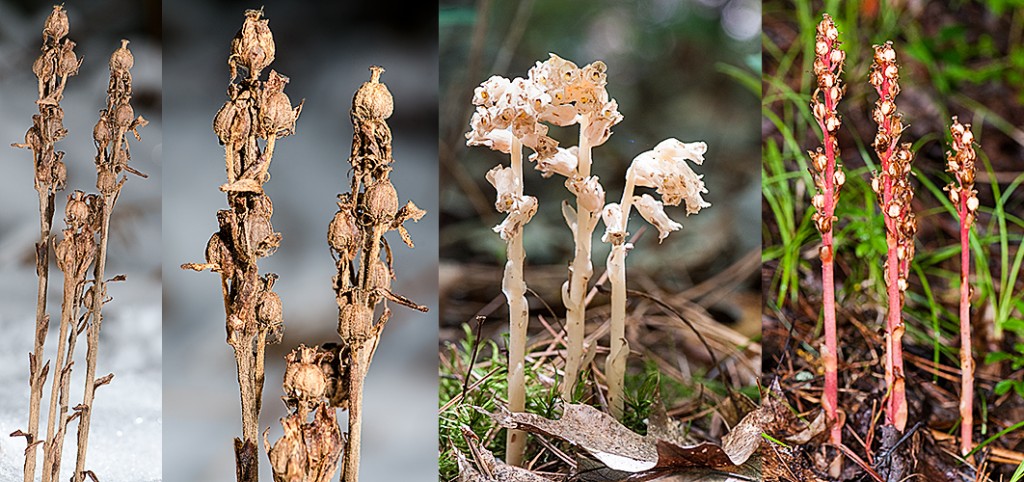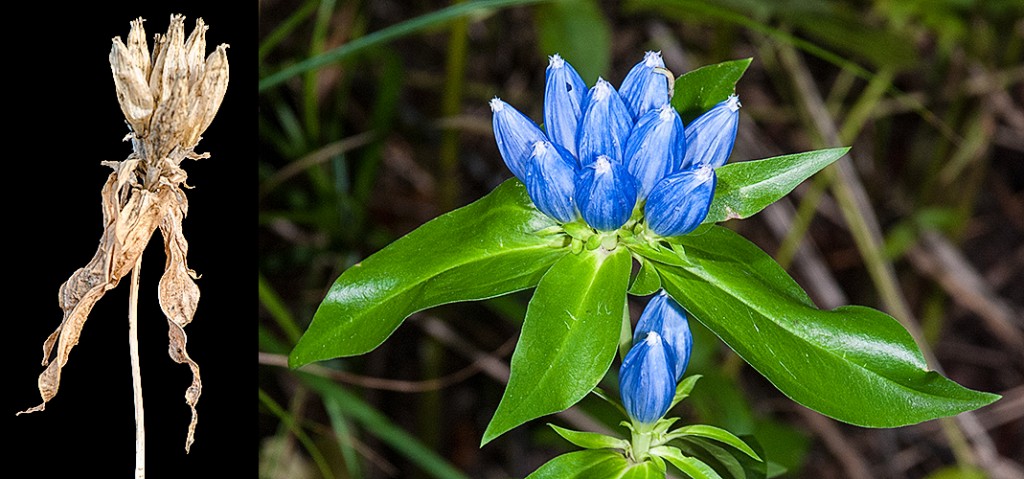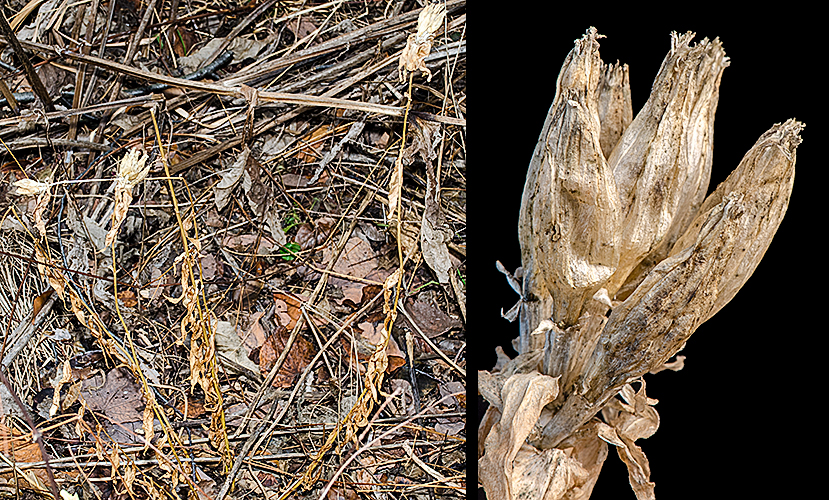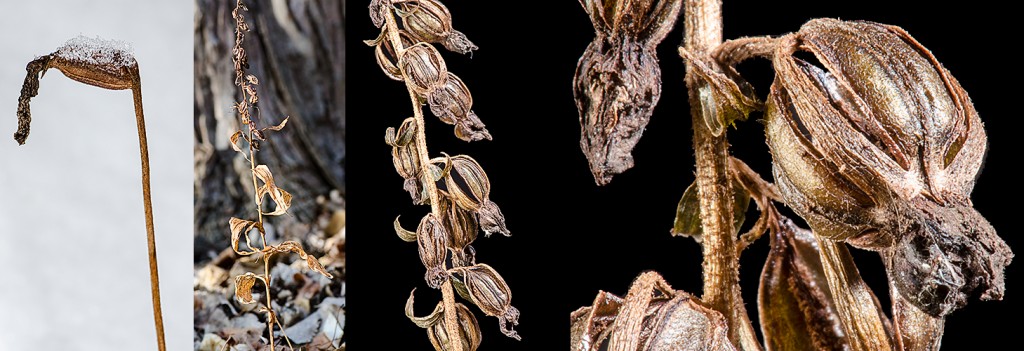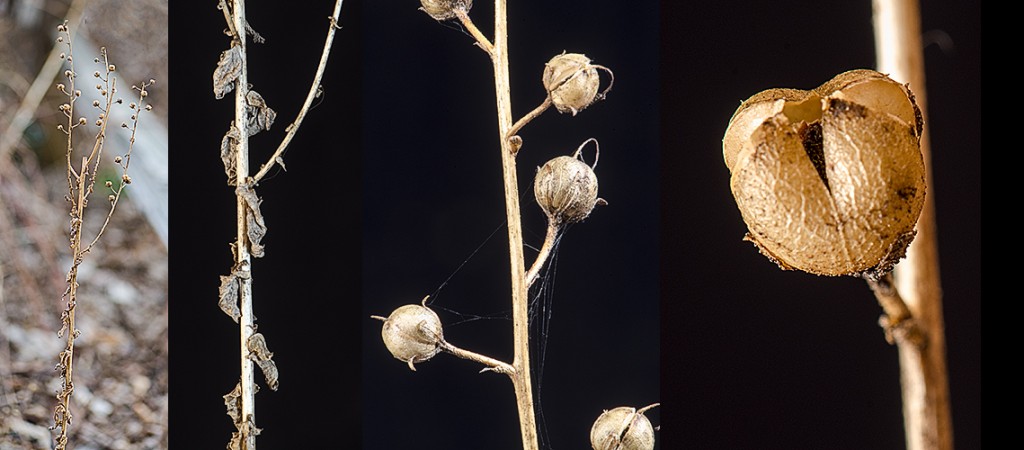Here are some of the other southeast Michigan winter wildflowers with small pods. By small I mean shorter then 13mm [1/2 inch] and a diameter less than 6mm (1/4 inch).
Pinesaps (Hypopitys monotropa) is also called (Monotropa hypopithys). Upward pointing styles and a loose spike are the characters of this species. Pinesaps are leafless plants that live off of tree roots that they attach to via a fungus. The fancy term is myco-heterotrophic plants. The flowers hang down but as the seedpods develop they turn upward.
Closed or Bottled Gentian (Gentiana andrewsii) in the winter is just like the flowers but without the color. It is difficult to identify the Closed Gentian group to species when they are flowering. The seedpod shown here was from a colony that I identified when it flowered in the fall so I know which species it is. Opposite leaves and the distinct seedpod shape identify this as part of the Closed Gentian group.
Orchids have distinctive 6 parted seedpods. Hanging from the end of the capsule are the dried up petals and sepals. Broad-leaved Helleborine (Epipactis helleborine) is commonly encountered even in the city. See blog posting from August 2013. Its leafy spike with many seedpods is distinctive.
Lady-slippers have large capsules and when in seed the species are identified based size, habitat and leaf remnants or leaf scars. Pink Lady-slipper or Moccasin Flower (Cypripedium acaule) has a single seedpod on a stem without leaf scars. I know of pinewoods where 1000’s of plants bloom and only a dozen plants set seed.
Moth Mullein (Verbascum blattaria) has 5mm (3/16 inch) diameter spherical seedpods on short, curved, upward pointing pedicels. Pedicels are the stalks that support individual flowers or seedpods on an inflorescence. Dried clasping leaves often remain along the main stem.
Copyright 2015 by Donald Drife
Webpage Michigan Nature Guy
Follow MichiganNatureGuy on Facebook

